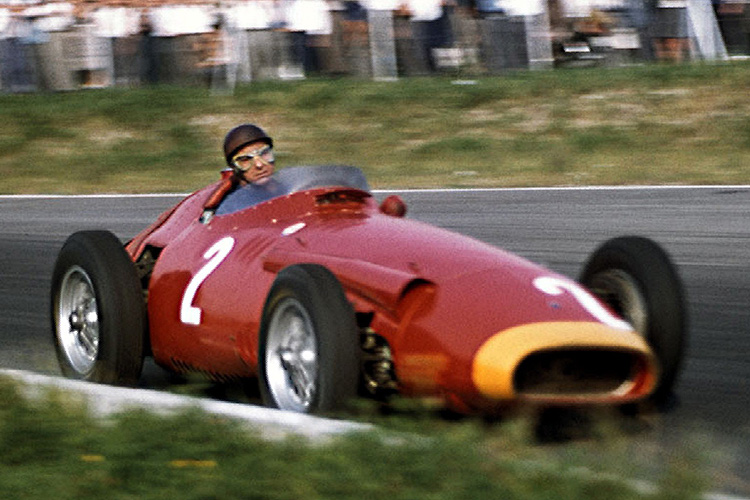
Fangio showcased his impressive skills while racing for Maserati at the 1957 Italian Grand Prix. photo courtesy of LAT Images
One Argentinian Formula 1 driver, in the golden days of flammable suits and an absence of seatbelts, changed the world.
Juan Manuel Fangio, nicknamed El Chueco (bow-legged), was a force to be reckoned with on the racetrack in the first decade of Formula 1. Throughout his ten-year career, he drove for many acclaimed teams, including Maserati, Ferrari, and Mercedes-Benz. According to the Official Formula 1 site, after a background in long-distance racing with self-prepared cars, Fangio made his F1 debut in 1948, funded by the Argentine Automobile Club. He won his first podium at the 1950 Monaco Grand Prix, also gaining his first win with Alfa Romeo.
As his domination of early F1 continued, Fangio found himself a pawn in a political battle between Castro Rebels and Fulgencio Batista. The night before the 1958 Cuban Grand Prix, Fangio left his hotel room and arrived downstairs for dinner. He found himself signing autographs for fans, per usual, before suddenly being met at gunpoint by a man informing him he was being kidnapped. Castro Rebels kidnapped Fangio from Hotel Lincoln and proceeded to hold him captive for the next 26 hours. They also intended on kidnapping his fellow driver, Stirling Moss, but Fangio seemed to convince them otherwise. Soon after they climbed into the getaway car, Fangio’s kidnappers instructed him to remain low in case gunfire broke out. During his captivity, Fangio charmed his captors, even having dinner with the owner of the safe house and signing autographs for her children. Arnold Rodriguez Camps, one of the revolutionaries at the time, stated in a 1997 interview that they “had to do something to show the world we were serious about the revolution, and to ridicule Batista, but we also needed to show we were not the murdering thugs and bandits Batista kept saying we were. So we decided to have Fangio as our guest for 24 hours.”
Fangio – who, despite his hostage status, was never harmed – was really only a piece in an attempt for political leverage against President Batista. Fangio even referred to his captors as his ‘new Cuban friends’ when they met with the Argentinian ambassador to release the star driver from their clutches. Luckily for Fangio, his life might’ve been saved by his kidnappers. That Grand Prix saw a catastrophic accident at Lap 6. Armando Garcia Cifuentes, who was a more inexperienced driver, hit an oil slick. After he drove into the turn, he slammed on his brakes. His Ferrari lurched forward and rolled into the crowd. With the car going 110 miles an hour, seven were reported dead, at least another thirty injured. Another driver, Bruce Kessler, recalled that after the red lights went on the track and he stopped, he heard gunshots. Whether it was a person in the crowd, a driver, or pit member, shots were fired in the air to keep the crowd back.
Though Fangio never got to race in that Grand Prix, and luckily so, he was still an amazing driver whose talent and temperament was admired by many. He retired that year, following the French Grand Prix, where he finished 4th. His record of five consecutive championships remained unbeaten until 2003, when Michael Schumacher gained his sixth driver’s championship title.
“To race is to live. But those who died while racing knew, perhaps, how to live more than all the others.” Fangio, along with many others in his profession, were impressive examples of the nature behind that quote – to race truly is to live, and Fangio did a wonderful job of living.